Numerical Investigations on the Water Entry of Cylindrical Projectiles with Different Initial Conditions
Abstract
:1. Introduction
2. Numerical Methods and Theoretical Model
2.1. Governing Equations
2.2. Turbulence Model
2.3. Ballistic Equations
2.4. Cavity Dynamic Modeling
2.5. Problem Description and Computational Method
2.6. Validation of Numerical Simulations
3. Results and Discussions
4. Conclusions
Author Contributions
Funding
Conflicts of Interest
References
- Lee, M.; Longoria, R.G.; Wilson, D.E. Cavity dynamics in high-speed water entry. Phys. Fluids 1997, 9, 540–550. [Google Scholar]
- Lee, M. Water-entry induced cavity pressure. KSME Int. J. 2000, 14, 562–568. [Google Scholar] [CrossRef]
- Wei, Z.-H.; Wang, S.-S.; Ma, F.; Lü, Q.-Z.; Zhong, X. Experimental Investigation of Water-Entry Phenomenon. J. Beijing Inst. Technol. 2010, 19, 127–131. [Google Scholar]
- Yan, H.; Liu, Y.; Kominiarczuk, J.; Yue, D.K.P. Cavity dynamics in water entry at low Froude numbers. J. Fluid Mech. 2009, 641, 441–461. [Google Scholar] [CrossRef]
- Yao, E.; Wang, H.; Pan, L.; Wang, X.; Woding, R. Vertical water-entry of bullet-shaped projectiles. J. Appl. Math. Phys. 2014, 2, 323. [Google Scholar] [CrossRef]
- Duclaux, V.; Caillé, F.; Duez, C.; Ybert, C.; Bocquet, L.; Clanet, C. Dynamics of transient cavities. J. Fluid Mech. 2007, 591, 1–19. [Google Scholar]
- Bergmann, R.; Van Der Meer, D.; Gekle, S.; Van Der Bos, A.; Lohse, D. Controlled impact of a disk on a water surface: Cavity dynamics. J. Fluid Mech. 2009, 633, 381–409. [Google Scholar] [CrossRef]
- Gao, J.; Chen, Z.; Ma, J. Numerical Investigation of the Water Entry of Two Head Shapes Bullet. In Proceedings of the 2015 8th International Conference on Intelligent Computation Technology and Automation (ICICTA), Nanchang, China, 14–15 June 2015; pp. 584–587. [Google Scholar]
- Truscott, T.T.; Epps, B.P.; Belden, J. Water entry of projectiles. Annu. Rev. Fluid Mech. 2014, 46, 355–378. [Google Scholar] [CrossRef]
- Aristoff, J.M.; Bush, J.W.M. Water entry of small hydrophobic spheres. J. Fluid Mech. 2009, 619, 45–78. [Google Scholar]
- Aristoff, J.M.; Truscott, T.T.; Techet, A.H.; Bush, J.W.M. The water entry of decelerating spheres. Phys. Fluids 2010, 22, 32102. [Google Scholar] [CrossRef]
- Guo, Z.; Zhang, W.; Xiao, X.; Wei, G.; Ren, P. An investigation into horizontal water entry behaviors of projectiles with different nose shapes. Int. J. Impact Eng. 2012, 49, 43–60. [Google Scholar] [CrossRef]
- Guo, Z.; Zhang, W.; Cong, W. Experimental and theoretical study on the high-speed horizontal water entry behaviors of cylindrical projectiles. J. Hydrodyn. Ser. B 2012, 24, 217–225. [Google Scholar] [CrossRef]
- Shi, H.-H.; Itoh, M.; Takami, T. Optical observation of the supercavitation induced by high-speed water entry. J. Fluids Eng. 2000, 122, 806–810. [Google Scholar] [CrossRef]
- Truscott, T.T.; Techet, A.H. Water entry of spinning spheres. J. Fluid Mech. 2009, 625, 135–165. [Google Scholar] [CrossRef]
- Zwart, P.J.; Gerber, A.G.; Belamri, T. A two-phase flow model for predicting cavitation dynamics. In Proceedings of the Fifth International Conference on Multiphase Flow, Yokohama, Japan, 30 May–4 June 2004; Volume 152. [Google Scholar]
- Zwart, P.J. Numerical Modelling of Free Surface and Cavitating Flows. In VKI Lucture Series; Ansys Canada Ltd.: Waterloo, ON, Canada, 2005; pp. 1–25. [Google Scholar]
- Yu, A.; Tang, Q.; Zhou, D. Cavitation Evolution around a NACA0015 Hydrofoil with Different Cavitation Models Based on Level Set Method. Appl. Sci. 2019, 9, 758. [Google Scholar] [CrossRef]
- Launder, B.E.; Spalding, D.B. Lectures in Mathematical Models of Turbulence; Academic Press: London, UK, 1972. [Google Scholar]
- Kunz, R.F.; Lindau, J.W.; Gibeling, H.J.; Mulherin, J.M.; Bieryla, D.J.; Reese, E.A. Unsteady, three-dimensional multiphase cfd analysis of maneuvering high speed supercavitating vehicles. AIAA 2003-841. In Proceedings of the 41st Aerospace Sciences Meeting and Exhibit, Reno, NV, USA, 6–9 January 2003. [Google Scholar]
- Savchenko, Y.N.; Vlasenko, Y.D.; Semenenko, V.N. Experimental studies of high-speed cavitated flows. Int. J. Fluid Mech. Res. 1999, 26, 365–374. [Google Scholar] [CrossRef]
- Fluent Inc. Fluent Theory Guide; ANSYS, Inc.: Canonsburg, PA, USA, 2014. [Google Scholar]
- Roache, P.J. Quantification of uncertainty in computational fluid dynamics. Annu. Rev. Fluid Mech. 1997, 29, 123–160. [Google Scholar] [CrossRef]
- Blocken, B.; Gualtieri, C. Ten iterative steps for model development and evaluation applied to Computational Fluid Dynamics for Environmental Fluid Mechanics. Environ. Model. Softw. 2012, 33, 1–22. [Google Scholar] [CrossRef]

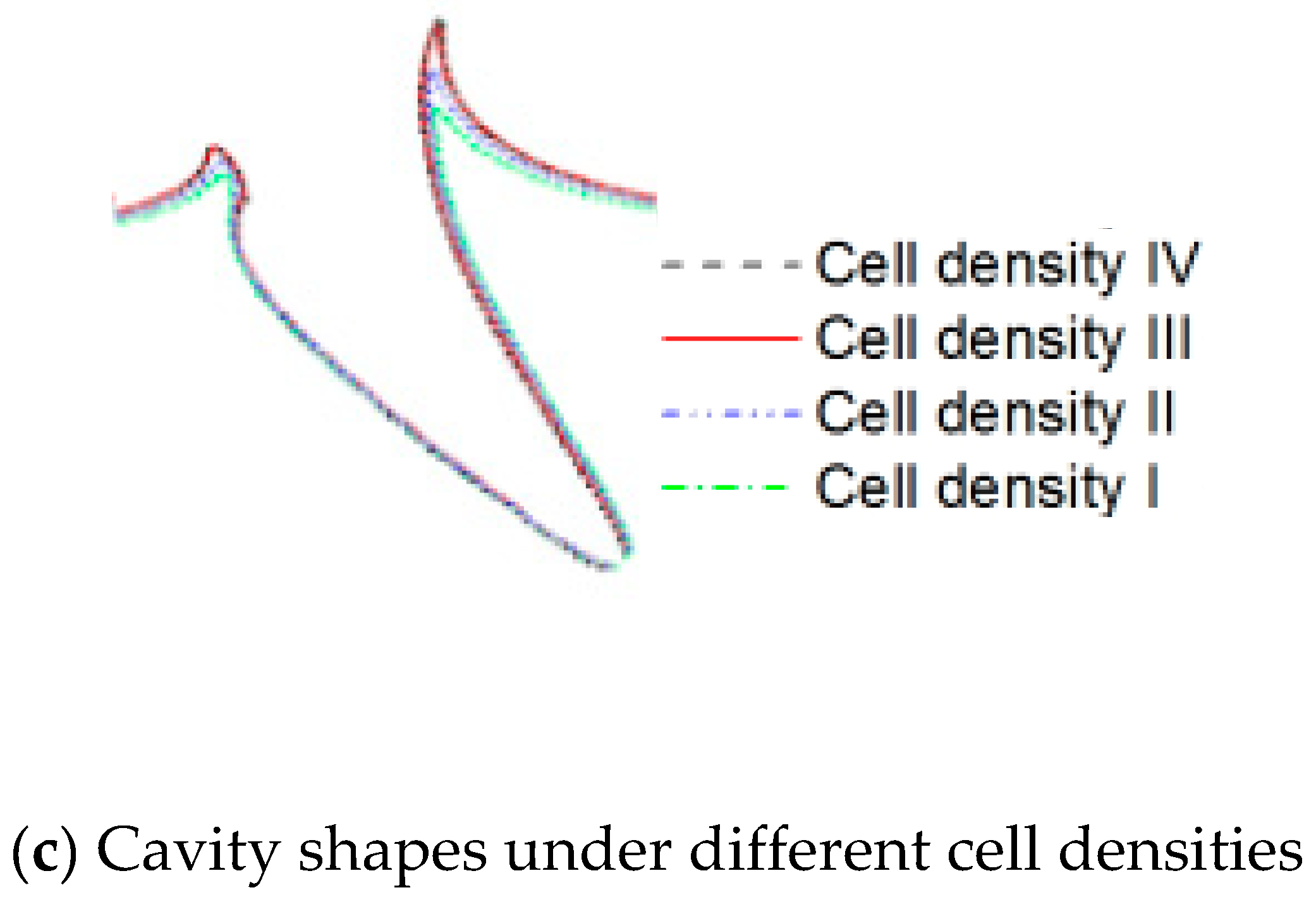
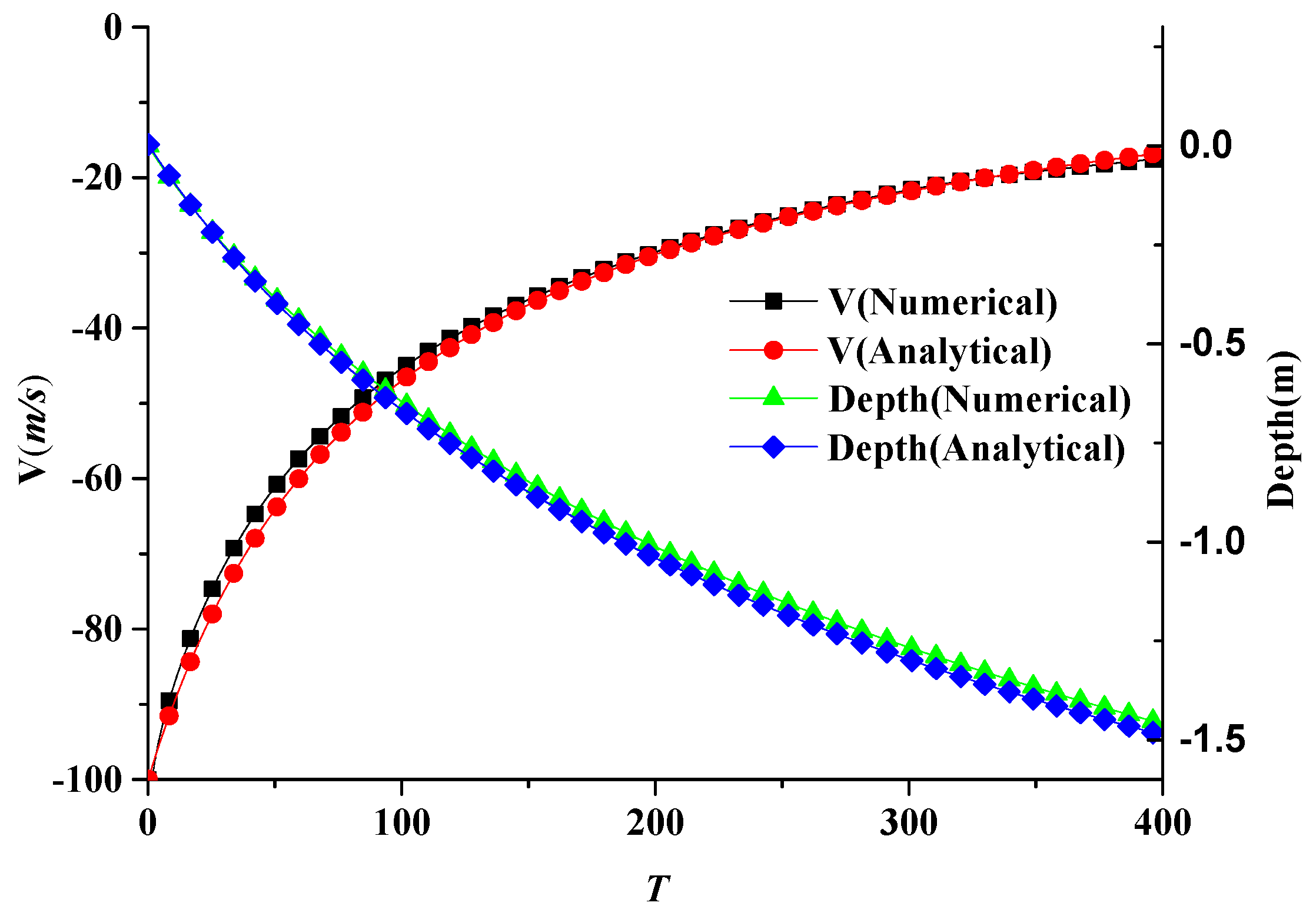

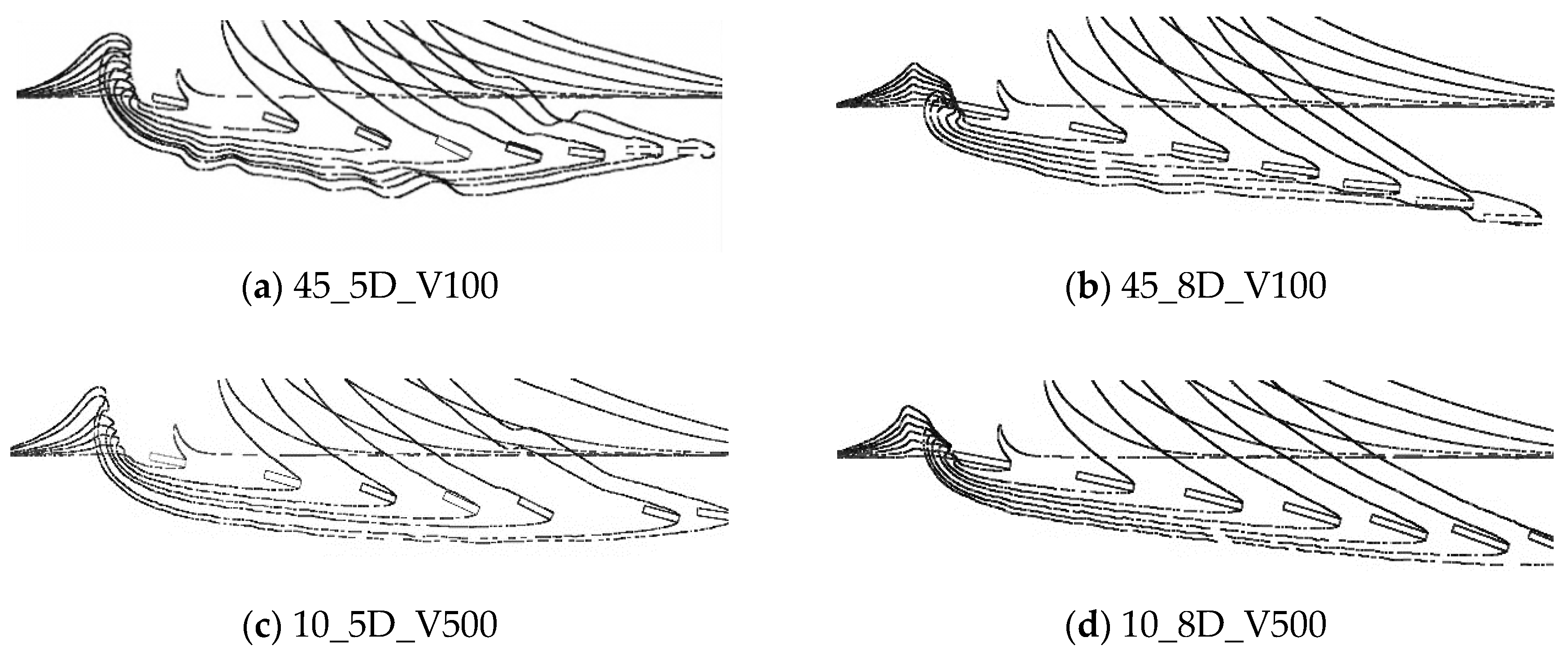
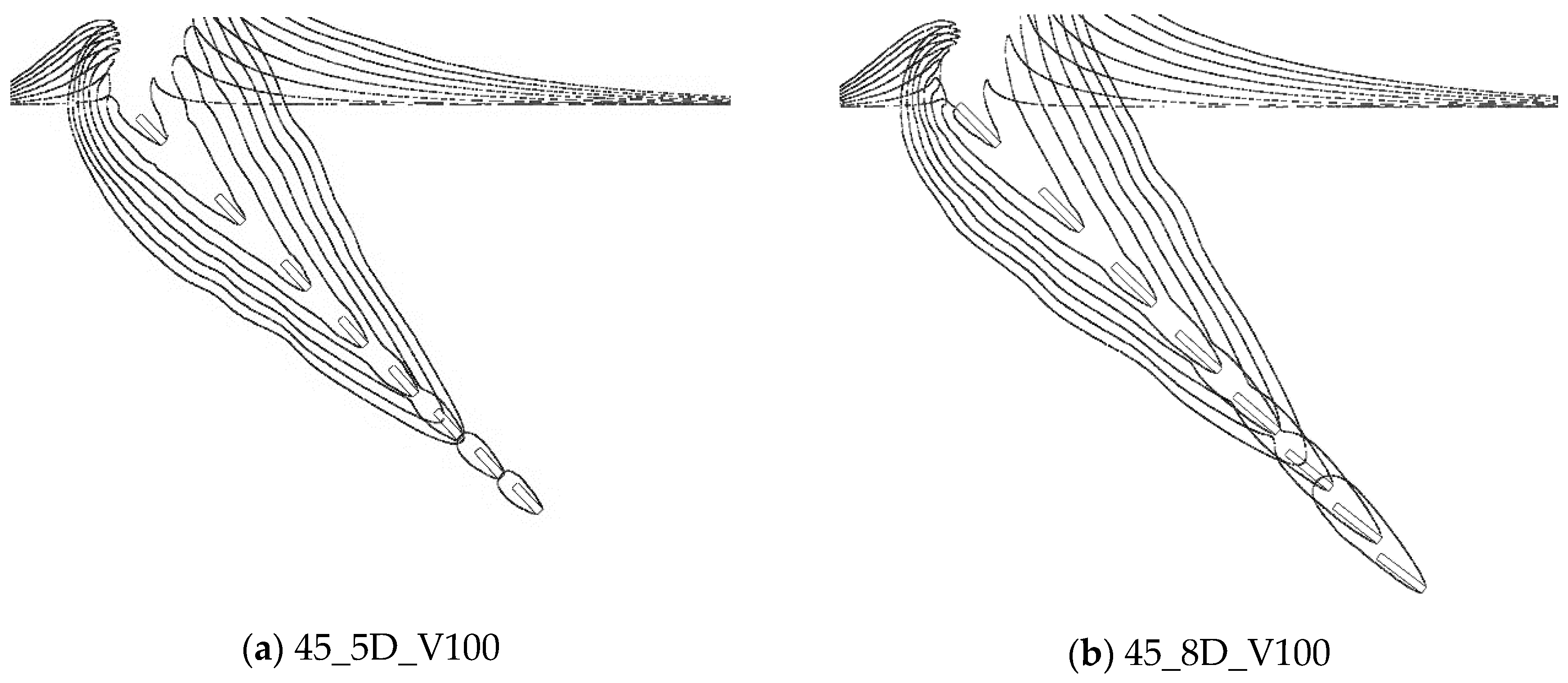

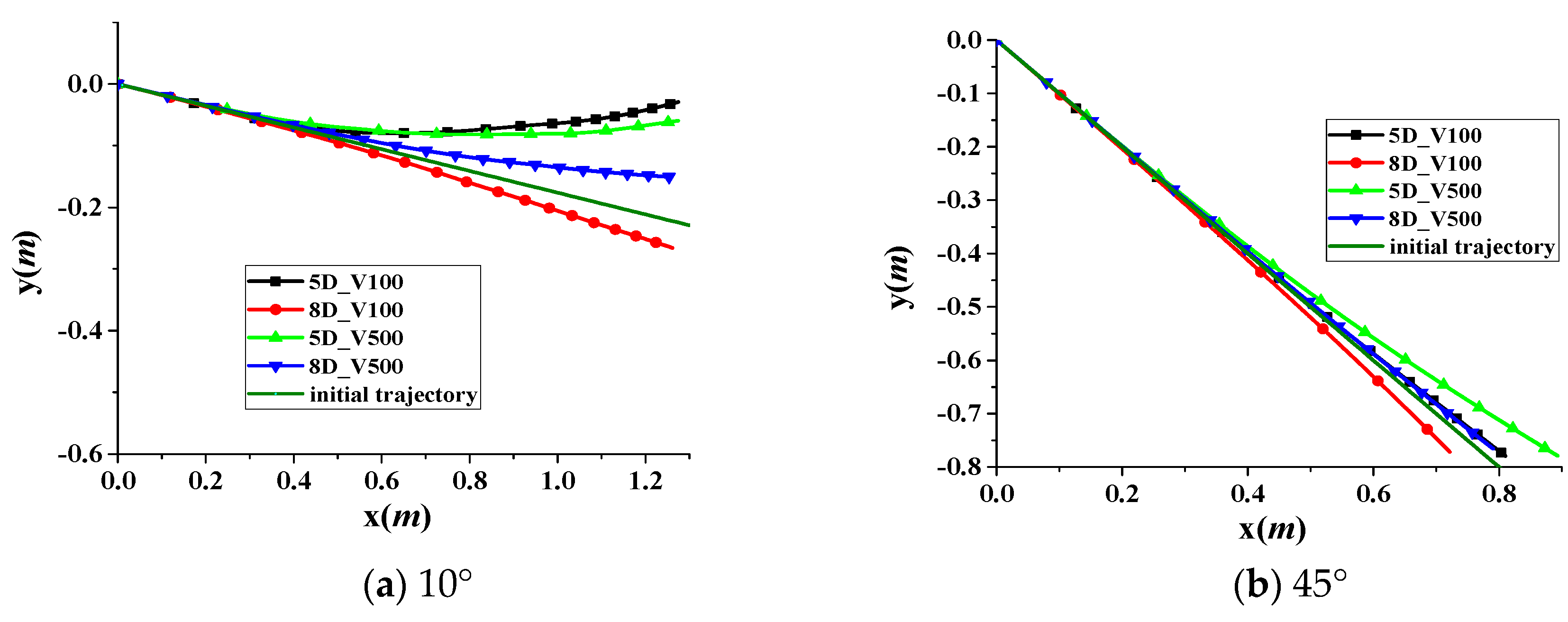

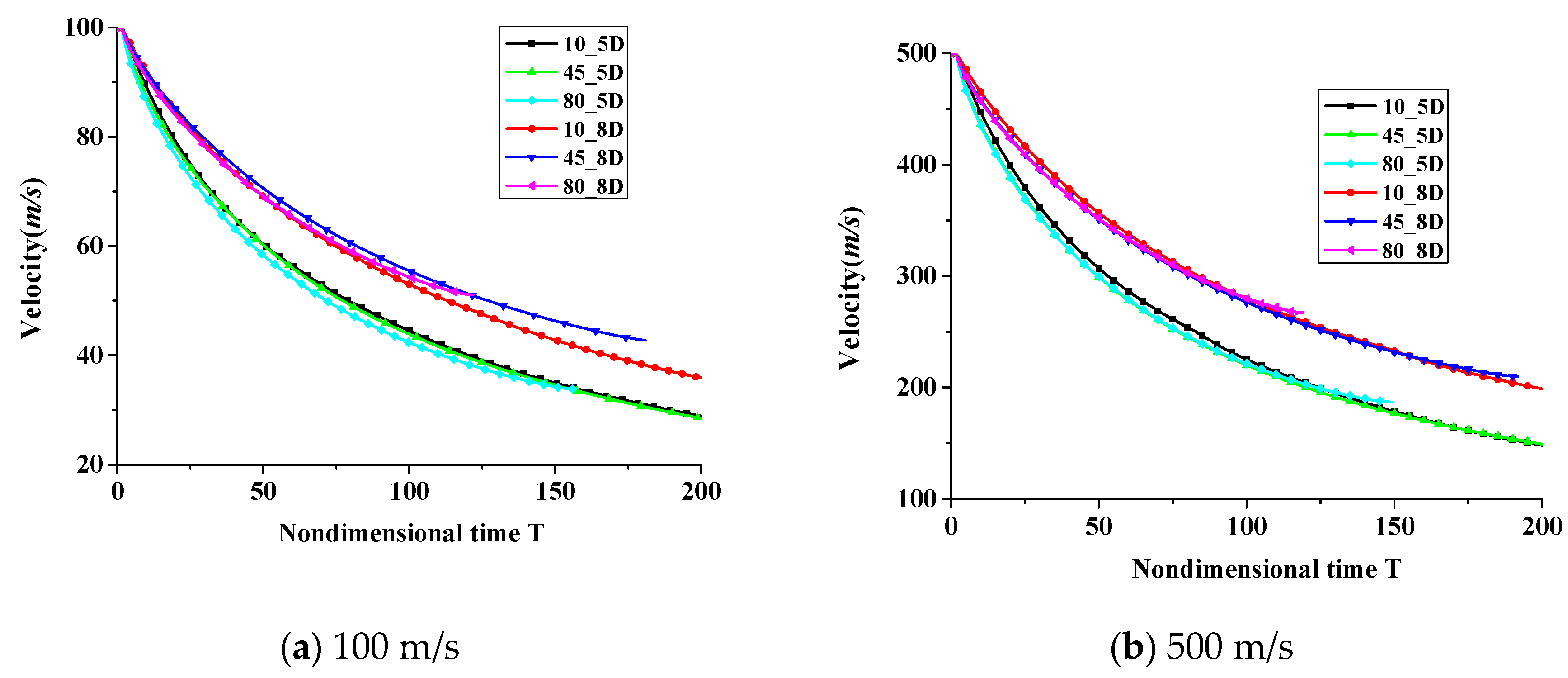
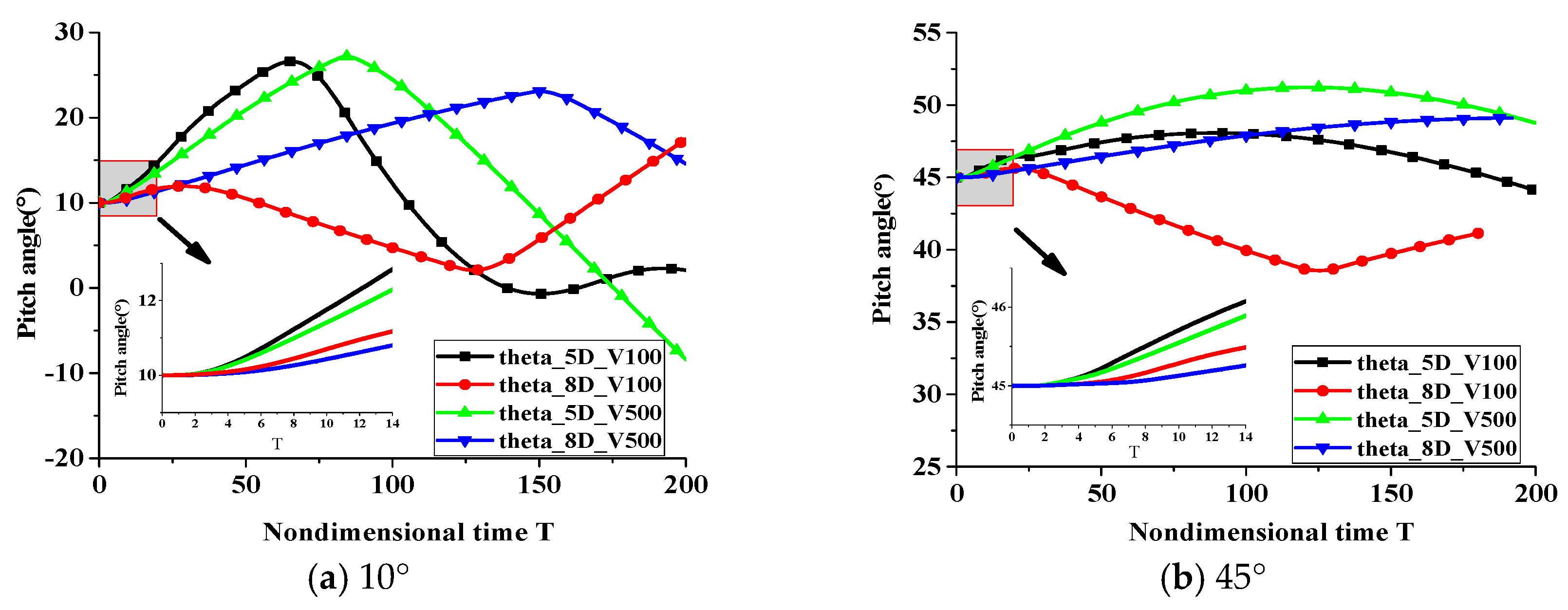
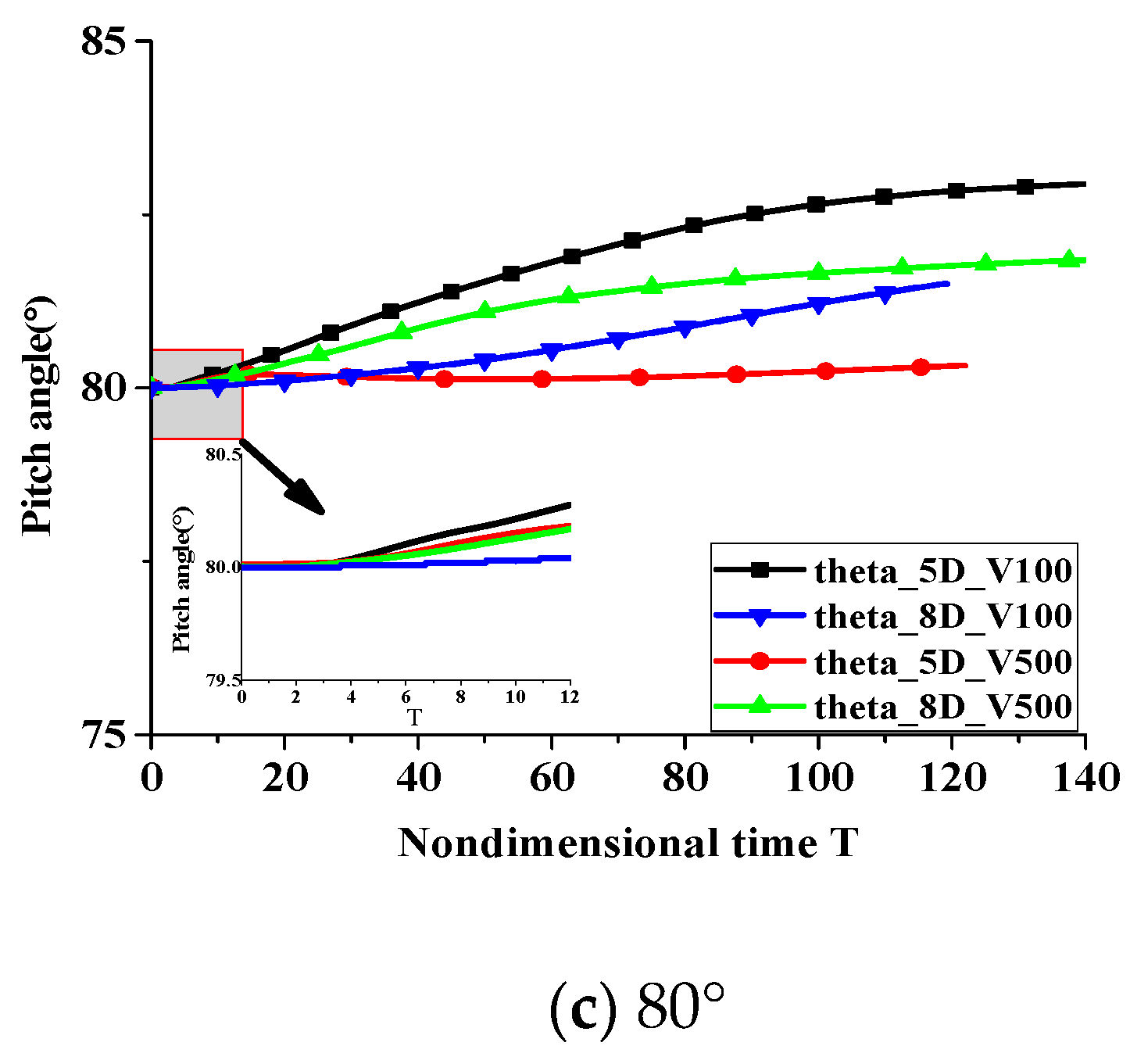

© 2019 by the authors. Licensee MDPI, Basel, Switzerland. This article is an open access article distributed under the terms and conditions of the Creative Commons Attribution (CC BY) license (http://creativecommons.org/licenses/by/4.0/).
Share and Cite
Gao, J.; Chen, Z.; Wu, W.-T.; Li, X. Numerical Investigations on the Water Entry of Cylindrical Projectiles with Different Initial Conditions. Appl. Sci. 2019, 9, 1858. https://doi.org/10.3390/app9091858
Gao J, Chen Z, Wu W-T, Li X. Numerical Investigations on the Water Entry of Cylindrical Projectiles with Different Initial Conditions. Applied Sciences. 2019; 9(9):1858. https://doi.org/10.3390/app9091858
Chicago/Turabian StyleGao, Jianguo, Zhihua Chen, Wei-Tao Wu, and Xin Li. 2019. "Numerical Investigations on the Water Entry of Cylindrical Projectiles with Different Initial Conditions" Applied Sciences 9, no. 9: 1858. https://doi.org/10.3390/app9091858



